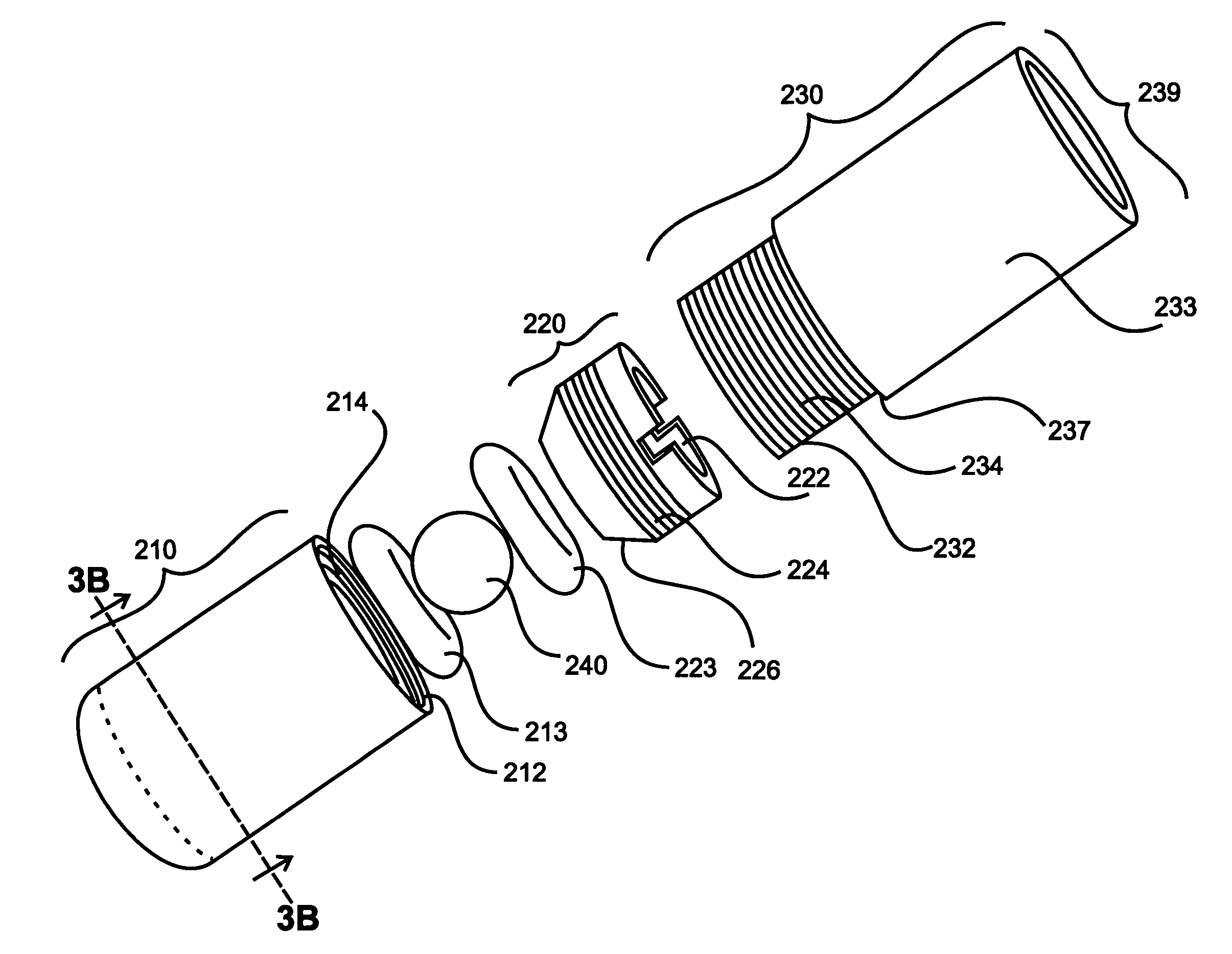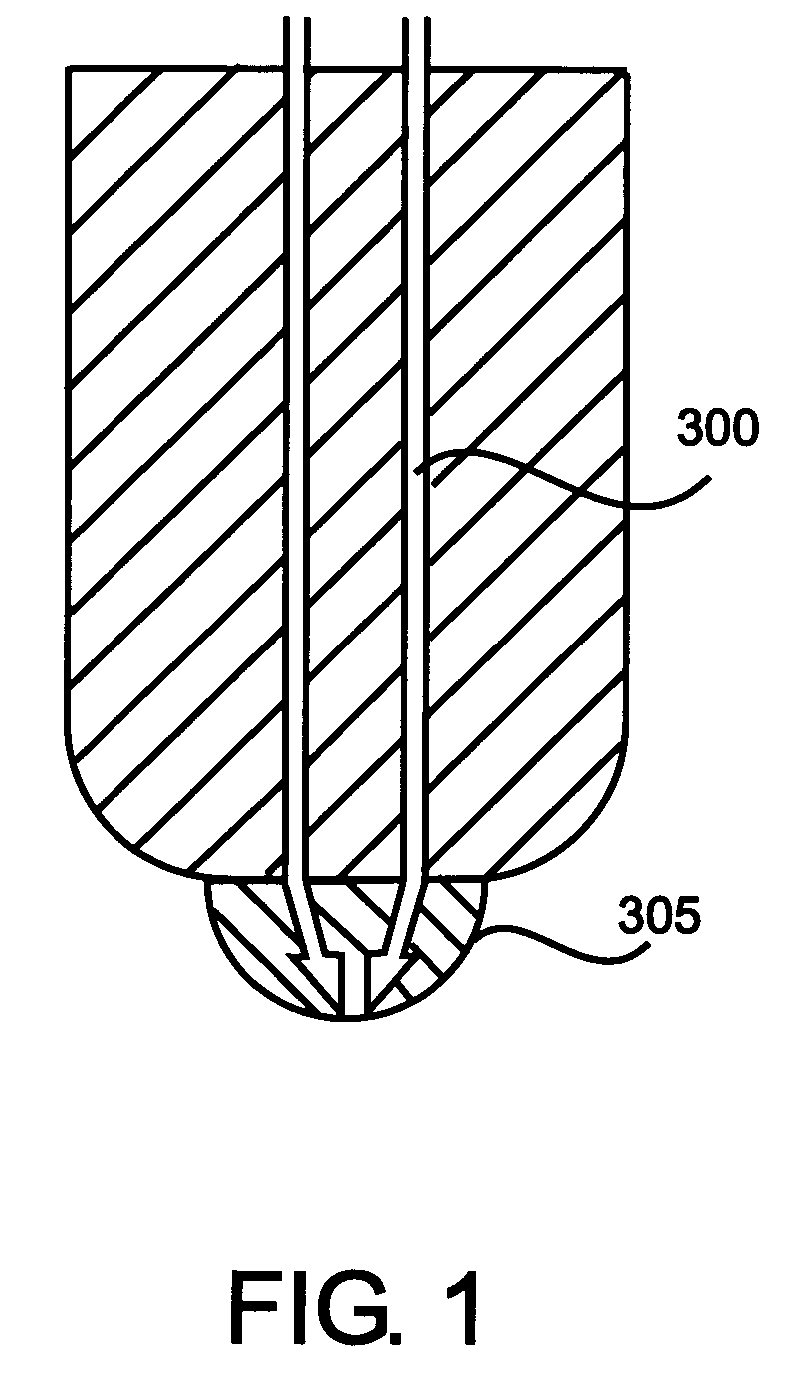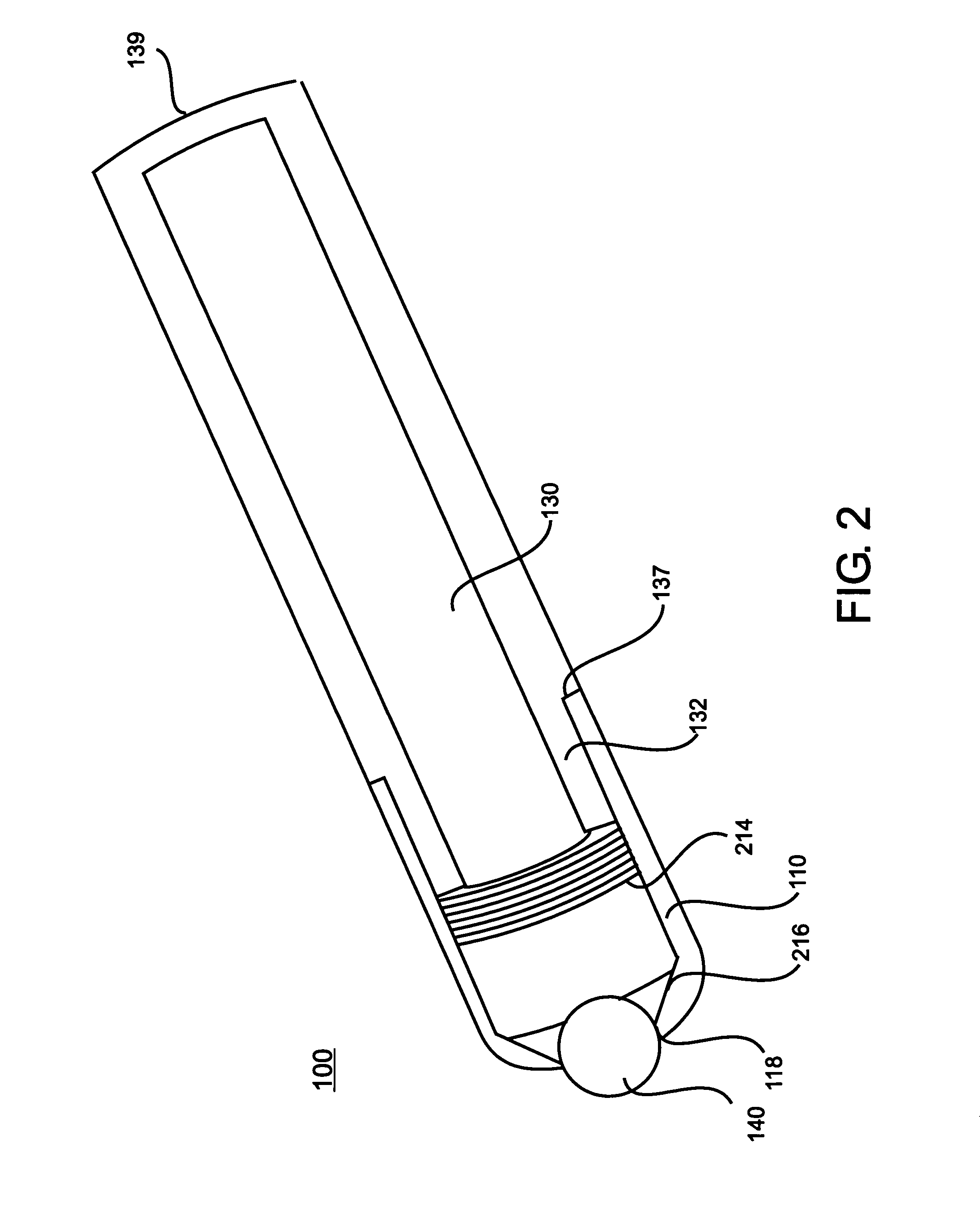Optical immersion probe incorporating a spherical lens
a technology of optical immersion probe and spherical lens, which is applied in the direction of optical radiation measurement, instruments, spectrometry/spectrophotometry/monochromators, etc., can solve the problems of measurement imprecision, degrading performance over time, and inconvenient use, and achieve good analytical performance
- Summary
- Abstract
- Description
- Claims
- Application Information
AI Technical Summary
Benefits of technology
Problems solved by technology
Method used
Image
Examples
example 1
Analysis of Acrylic Paint
[0037]In this experiment, Raman spectroscopy was performed in a sample of white acrylic paint to compare the performance of the spherical lens optical immersion probe of this invention to a commercially available Raman immersion probe, using the same Raman instrument described above.
[0038]The data from the experiment are shown in FIG. 4. The Raman peaks of the whitening agent, TiO2, were used for comparison in the experiment. The initial results from this experiment were very promising. The spherical lensed immersion probe was placed into the paint sample five separate times with no alignment or adjustment of its position / focus. A spectrum (5 sec. exposure, 10 accumulations) was collected after the probe was submerged in the white acrylic paint sample. The same was done with the commercial probe, after it was aligned for optimal focus before the first measurement.
[0039]The relative sensitivity of the two probes was comparable, however the measurement reprodu...
example 2
Agglomerates of Silica Particles
[0040]The sampling apparatus for the mixing experiments described in Examples 2 and 3 below is shown in FIG. 5. The sampling apparatus consisted of a tubular fluidized bed reactor 560 equipped with a dry nitrogen gas inlet 550 for mixing. The spherical lens optical immersion probe 500 was compression sealed in the reactor from above with a Swagelok pressure fitting 580.
[0041]Agglomerates of <1 μm silica particles powder coated with polydimethylsiloxane (PDMS) polymer were analyzed with Raman spectroscopy. The silica particles were placed in the vessel and fluidized (actively mixed) by flowing dry nitrogen through the vessel. The immersion probe was positioned in the fluidized sample to ensure constant contact with the turbulent sample.
[0042]The results of five spectra taken over a five minute time period during this experiment are shown in FIG. 6. Each spectrum was the average of five, five-second accumulations. The spectra consisted of Raman peaks co...
example 3
Mixing Analysis of Two Powders
[0043]The optical immersion probe of this invention was used to monitor the active mixing of different concentrations of citric acid in 25 g of sucrose. These samples were chosen for their relatively similar densities, particle sizes and ease of disposal.
[0044]The standard Raman spectra for both citric acid and sucrose are demonstrated in FIG. 7A. The two Raman spectra are quite similar except for the citric acid peak that occurs near 800 cm−1. Each spectrum was the average of five, five-second accumulations. The mixing experiment entailed placing both powdered samples into the fluidized bed, creating a 2-layer system. The data collection was then started followed by the start of the gas flow to begin the mixing process.
[0045]A total of 60 Raman spectra were obtained for each concentration of citric acid (1–30%). The citric acid concentration range was 1–30% (w / w) in 25 g of sucrose. The performance of the Raman immersion probe for measuring citric acid...
PUM
| Property | Measurement | Unit |
|---|---|---|
| distance | aaaaa | aaaaa |
| pressures | aaaaa | aaaaa |
| focal length | aaaaa | aaaaa |
Abstract
Description
Claims
Application Information
 Login to View More
Login to View More - R&D
- Intellectual Property
- Life Sciences
- Materials
- Tech Scout
- Unparalleled Data Quality
- Higher Quality Content
- 60% Fewer Hallucinations
Browse by: Latest US Patents, China's latest patents, Technical Efficacy Thesaurus, Application Domain, Technology Topic, Popular Technical Reports.
© 2025 PatSnap. All rights reserved.Legal|Privacy policy|Modern Slavery Act Transparency Statement|Sitemap|About US| Contact US: help@patsnap.com



